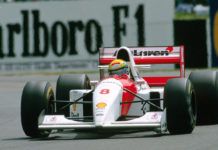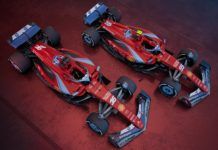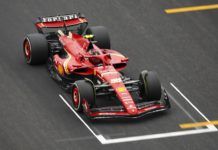Alfa Romeo’s Jan Monchaux discusses to where they allocated their development tokens, and where they made the most progress on the new C41.
Though not where they spent their development tokens, both team principal Frederic Vasseur, and technical director Jan Monchaux, both agree that aerodynamics was their most significant area of development on their 2021 car, launched in an online event early on Monday.
Aerodynamic work was not restricted in the off-season, and so Monchaux says much of the team’s focus was directed to this, where they were afforded greatly more freedom as they worked within the regulations. “In general, the freedoms we have on the aerodynamic side are still quite large,” he said.
“Freezing some key elements of the car certainly reduced our freedom, but where we could do the most was on the bargeboards, the front wing, the diffuser – [where] the regulations have not changed. Effectively, a lot of effort went into this,” said Monchaux, who also noted that the team’s aerodynamic work was inhibited by limited time in the wind tunnel.
“What has changed is a further reduction in the amount of testing you can do in a wind tunnel, which has dropped 20% compared to the previous year. That clearly [is] impacting the teams in the same way and forces you to think even harder than before,” Monchaux explained at the C41’s launch.
The team ultimately spent their two tokens on reworking their nose, narrowing it and rounding off its sides in a design similar in appearance to that utilized by McLaren in their MCL34 from 2019. Monchaux called their new nose an “advanced evolution” of that which was previously used in his explanation of the new design.
“The two tokens, we’ve been using on a new nose, so we’ve changed the nose structure. That was worth two tokens, two tokens were invested in this change, and you can see that the nose is quite an advanced evolution of last year’s concept, but a bit more extreme. That’s the areas [in which] we’ve been using these tokens,” he said.
Monchaux insists that the upgraded nose is a significant step forward, with some suggesting its more slender appearance did not go far enough to reap the benefits of a less obstructive nose. One such benefit, the 42-year-old is quick to point out, is the increased capacity to make use of a cape under the nose, popularised by Mercedes leading to a trend of narrow noses.
“Changing the nose is part of a front-end concept,” Monchaux shared. “The nose itself is part of the front-end itself, how we manage the Y250 vortex generated by the front wing, [and] how the air interacts with the deflectors, turning veins, and bargeboards we’ve got behind.
“The changes we’ve made on the front wing will allow us to extend the advantage of the cape, which is this horizontal plate emerging from the nose – something which will help us to have better control of the front wheel wake, and push [the air] out, which is what all of the aerodynamicists try to do in F1.
“I can’t put a number to [the pace advantage], because when it was in the wind tunnel it was positive, but we are not usually checking six months later to see with a new bargeboard and front wing how much better the new nose was. It was exhibiting very interesting features in terms of flow quality, and at that point we elected to leave it on.
“With respect to the others, we certainly look at what the others are doing, but we follow our own criteria and having a front wing concept that’s now in its third year or so, which is also quite different to [those] of other teams, some of the stuff we are looking for and finding might be different to the others. It doesn’t mean they are wrong, it doesn’t mean we are right, I have no crystal ball, but for us, when we elected to go for this new nose, it made sense,” Monchaux said.
Here’s Alfa Romeo’s C41



















